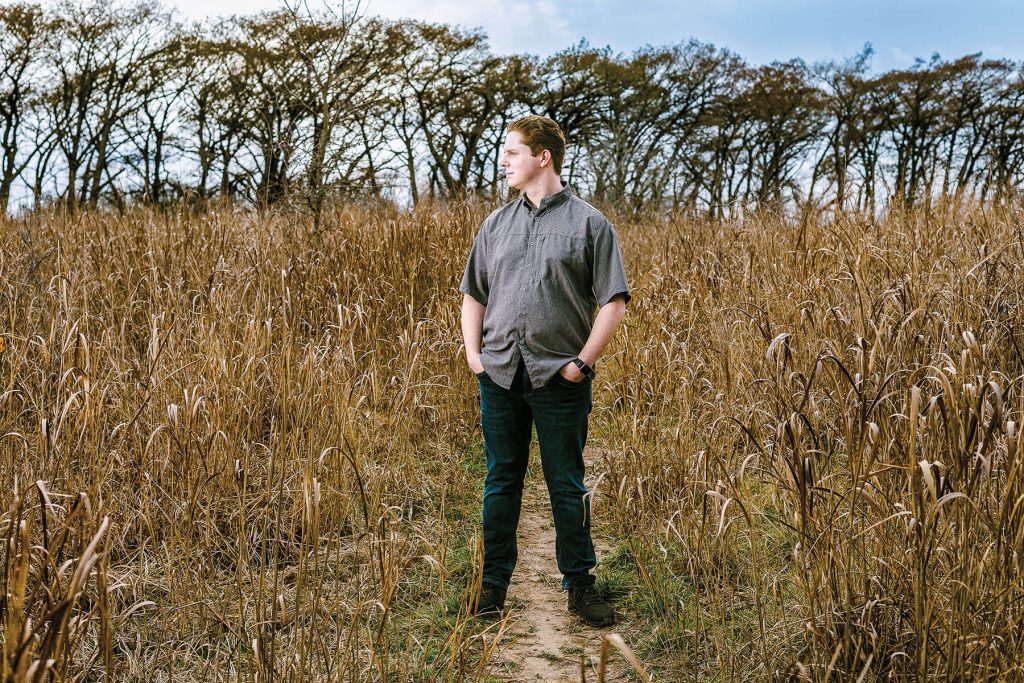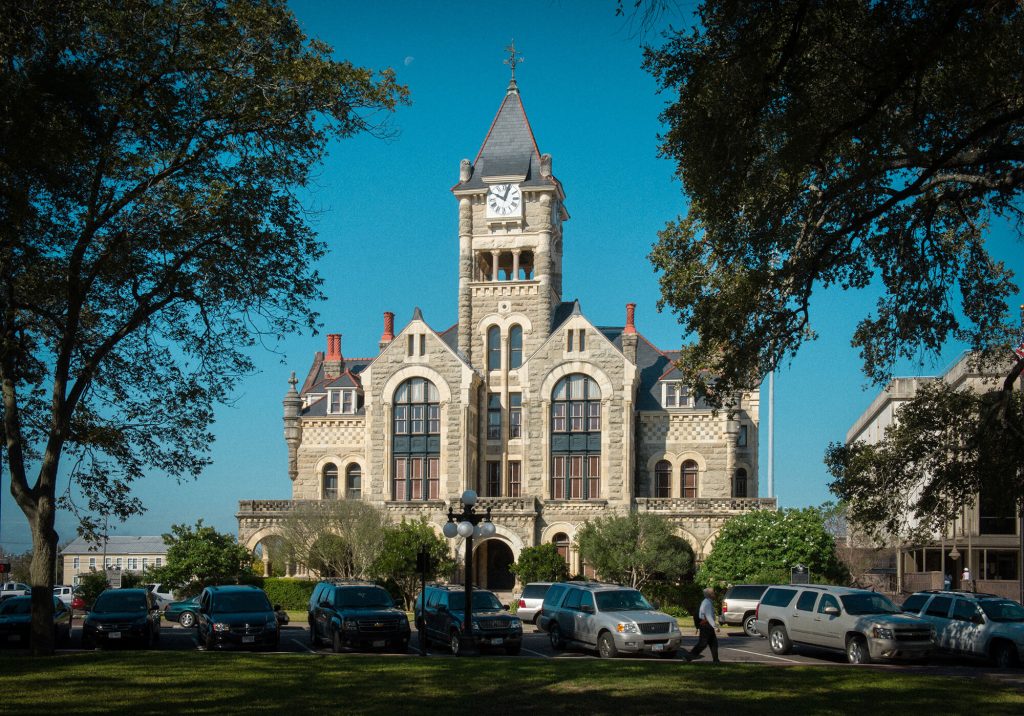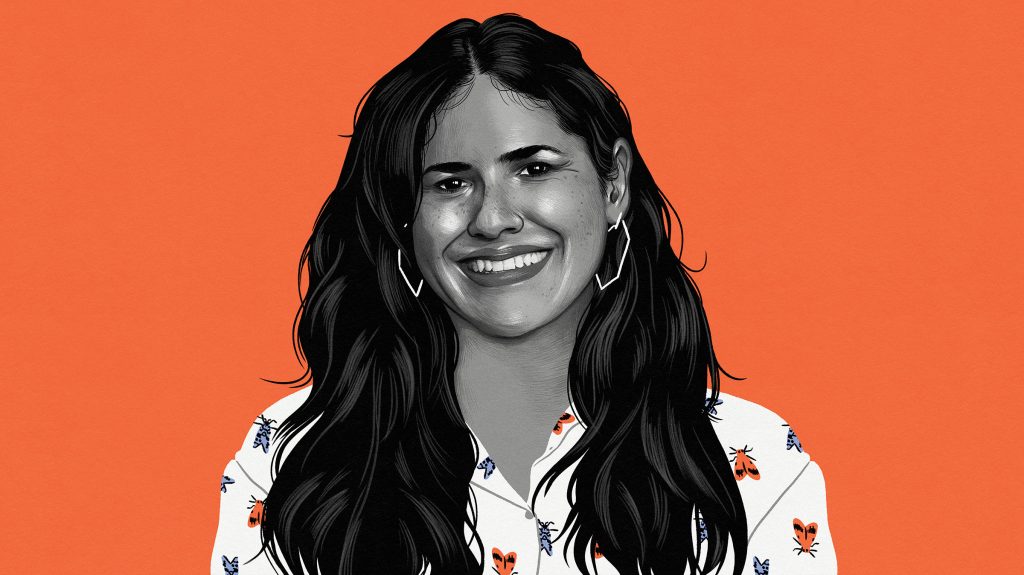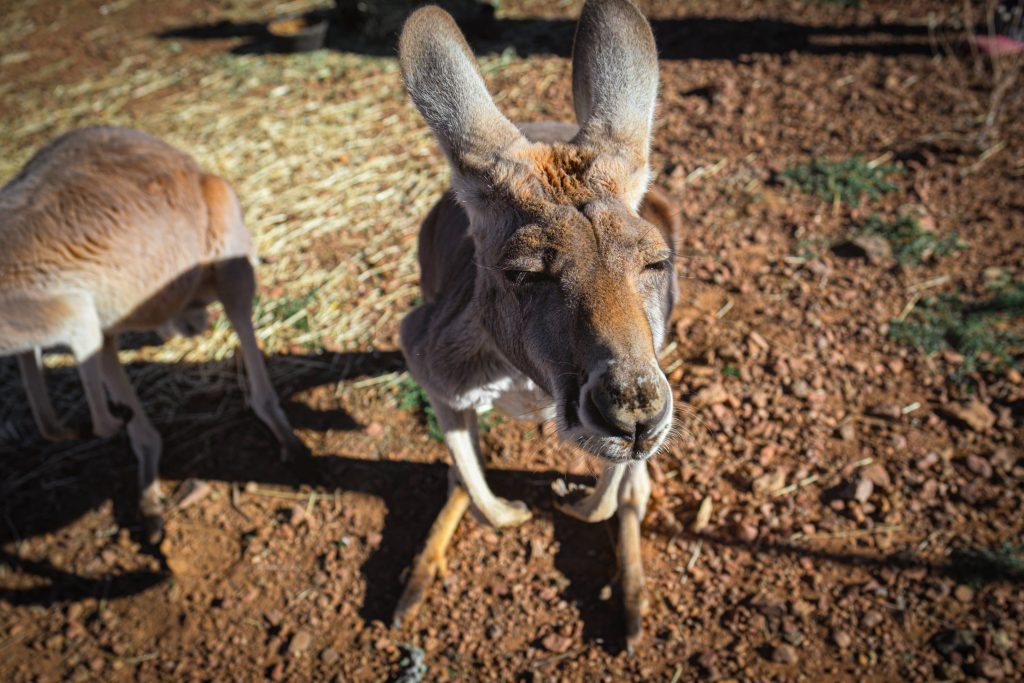
From left, Emilio Vargas, his father and creator of El Grandpa Javier Vargas, and business partner Keith Sheffield stand around the barbacoa pit in Georgetown.
Huddled in a rural Georgetown field, a handful of roaming gastronomes are attempting to warm themselves over two sealed brick fire pits arranged in a custom-built trailer. Despite their ability to battle the elements that chilly April morning, it’s what’s inside those 3,000-pound hornos, or ovens, that has turned El Grandpa Mexican BBQ into a viral social media sensation.
Opened in the summer of 2023 by Javier Vargas and his son Emilio, their destination for barbacoa de borrego has started to draw the kinds of lines normally reserved for pitmaster royalty like Aaron Franklin, of Franklin Barbecue in Austin. That’s because, unlike most barbacoa sold at restaurants—typically made by steaming or roasting beef cheek and tongue—El Grandpa is the rare establishment implementing the traditional Mexican method of all-night pit cooking. Covered with large maguey leaves, each cut of lamb is nestled over wood and charcoal embers that have been burned down for hours.
An enticing novelty for most Texans, the mastery of old school cooking techniques combined with the scarcity of Vargas’ output—no more than 14 whole lambs per weekend—has customers navigating this rural patch of Georgetown, nestled between old country sheds. Open only on Saturdays and Sundays, El Grandpa draws early crowds anxious to fill coolers with the coveted meat before it sells out by noon.
A little after 7 a.m. on this Saturday, 51-year-old Javier pulls an overhead handle connected to a wire pulley, which unleashes a torrent of steam that has been imprisoned for over 10 hours. Lifting the hulking metal lid, the father-and-son duo reach into the pit and begin clawing past two-foot-long maguey leaves as if they’re digging for buried treasure.
El Grandpa Mexican BBQ
150 Haverland Drive,
Georgetown.
Open Sat-Sun
8 a.m.-1 p.m.
737-444-9382

Javier Vargas adjusts maguey leaves used during the cooking process.
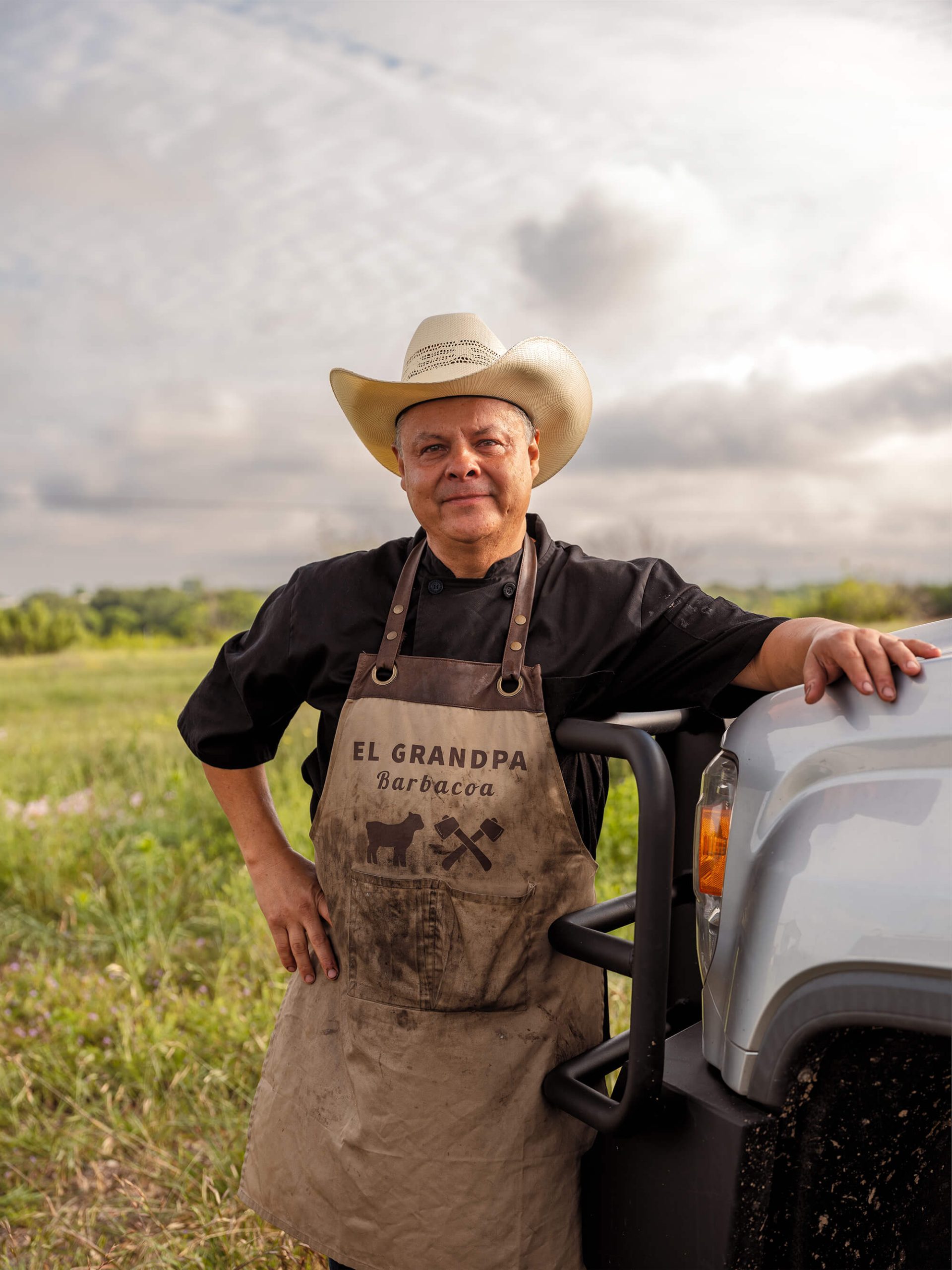
El Grandpa founder and cook Javier Vargas learned to cook traditional Mexican barbacoa from his father.
Out comes steaming shanks, skulls, and whole sides, the tender meat weakly embraced by rib bones. Next, Javier pulls out a large bucket filled with montalayo, a stew-like mixture of chopped liver, kidneys, and other offal. Finally, the Vargases reach inside with plastic pitchers to ladle up a fragrant broth laden with onions and chiles. This is the prized consommé—an accumulation of several hours’ worth of garlicky lamb fat drippings and moisture.
Before heading inside their second service trailer, armed with the spoils of a long and painstaking cook, Javier turns to his rapt audience and proclaims: “Te presento barbacoa del horno, estilo Hidalgo” (I present to you barbacoa from the pit, Hidalgo style), referring to the state of Mexico where the family–and his style of barbecue–originates from.
Initially called El Abuelo Mexican Barbeque, the restaurant was forced to change their name after receiving a cease-and-desist letter from a Tex-Mex chain in Lubbock last fall. But the seamless transition to an English moniker isn’t so strange when considering the All-American impetus behind the family’s emigration to Georgetown starting in 2019.
Growing up in Cuernavaca, Mexico, Emilio dreamed of moving across the border to play competitive high school football. Taking the leap when he was just 16, he excelled as a wide receiver and kicker at East View High School, and later at The University of Mary Hardin-Baylor in Benton. Like his favorite childhood team, the New England Patriots, Emilio’s East View squad shared the same colonial mascot. “And that’s how I knew that Georgetown was where I belonged,” he says.

Traditional Hidalgo-style barbacoa tacos
Although things were going well for his son, Javier had to make certain concessions in his new Texas home. After working in the legal profession in Mexico, Javier was forced to take restaurant and construction jobs when his license didn’t transfer to U.S. courts. Additionally, he missed the flavors of his native country. Dissatisfied with the ubiquitous steamed barbacoa seen around the area, Javier decided to try and recreate the version once perfected by his father Angel in their Mexico City garage. Although hailing from the state of Hidalgo, the nexus of barbacoa de borrego, Angel smoked his lamb in an aboveground pit instead of the traditional earthen oven found in his former Tulancingo home.
That distinction, emulated by Javier in his own barbacoa efforts, became critical when he decided to turn his successes at home into a restaurant in mid-2023. Local health authorities have long had strict rules pertaining to in-ground pit cooking, which is why only one Texas eatery, Vera’s Backyard BBQ in Brownsville, has been grandfathered into the more ancient style. In fact, Javier’s early setup consisted of a single open brick pit exposed to the elements, which drew the attention of Williamson County health authorities. After a temporary closure last fall, he’s now shielding his hornos with an elevated structure created by Ennis-based Johnson Custom BBQ Smokers. Through his compliance, Javier is able continue what he does best: make sumptuous, slightly gamey lamb barbacoa the way his father and grandfather did.
To appease beef-loving Texans, Javier throws slow-simmered cow tongues in with his consommé. But that’s the only modification he’s made to his family’s culinary customs. The labor of maintaining a steady fire, the exact butchering and sluggish cooking process—even the effort it takes to procure some weekend barbacoa—is how Javier prefers to run El Grandpa. According to the chef, this isn’t the type of food that should be “easy” or readily accessible. Back in Mexico, the dish was often reserved for special occasions like his own wedding—and that’s how the family still regards it today.
“When I do this, it feels like my father and mother are here guiding me,” Javier says. “Even though they’re no longer here physically, I can feel them watching over me like when I was a boy.”
Barbacoa 101
Sheep and baby lambs thrive in the cooler highlands of Central Mexico, whereas hotter, drier areas of Mexico tend to favor heartier livestock like goats. This is why states like Hidalgo specialize in lamb barbacoa instead of the northern cow head variety. Borrowing a method used by Indigenous Americans for thousands of years, the traditional Central Mexico style of barbacoa is made in raw earth pits.
In Texas, Vera’s Backyard BBQ in Brownsville claims the distinction of being the only establishment that still legally uses a below-ground pit lined with bricks. Current owner Armando Vera, who inherited the business from his father, says they’ve been exempt because current health codes arose after the business’s founding in 1955. Though the Texas Department of State Health Services provides guidelines that restrict earthen contact of barbecue pits, how these guidelines are enforced may vary by local jurisdiction. State guidelines also provide that “exceptions may be considered on a case-by-case basis.” The flexibility of the language, combined with the success of El Grandpa’s operation, has other chefs testing the bounds of those old regulations. This includes La Santa Barbacha in Austin which is now working with the city to get approval on installing their own hornos.
